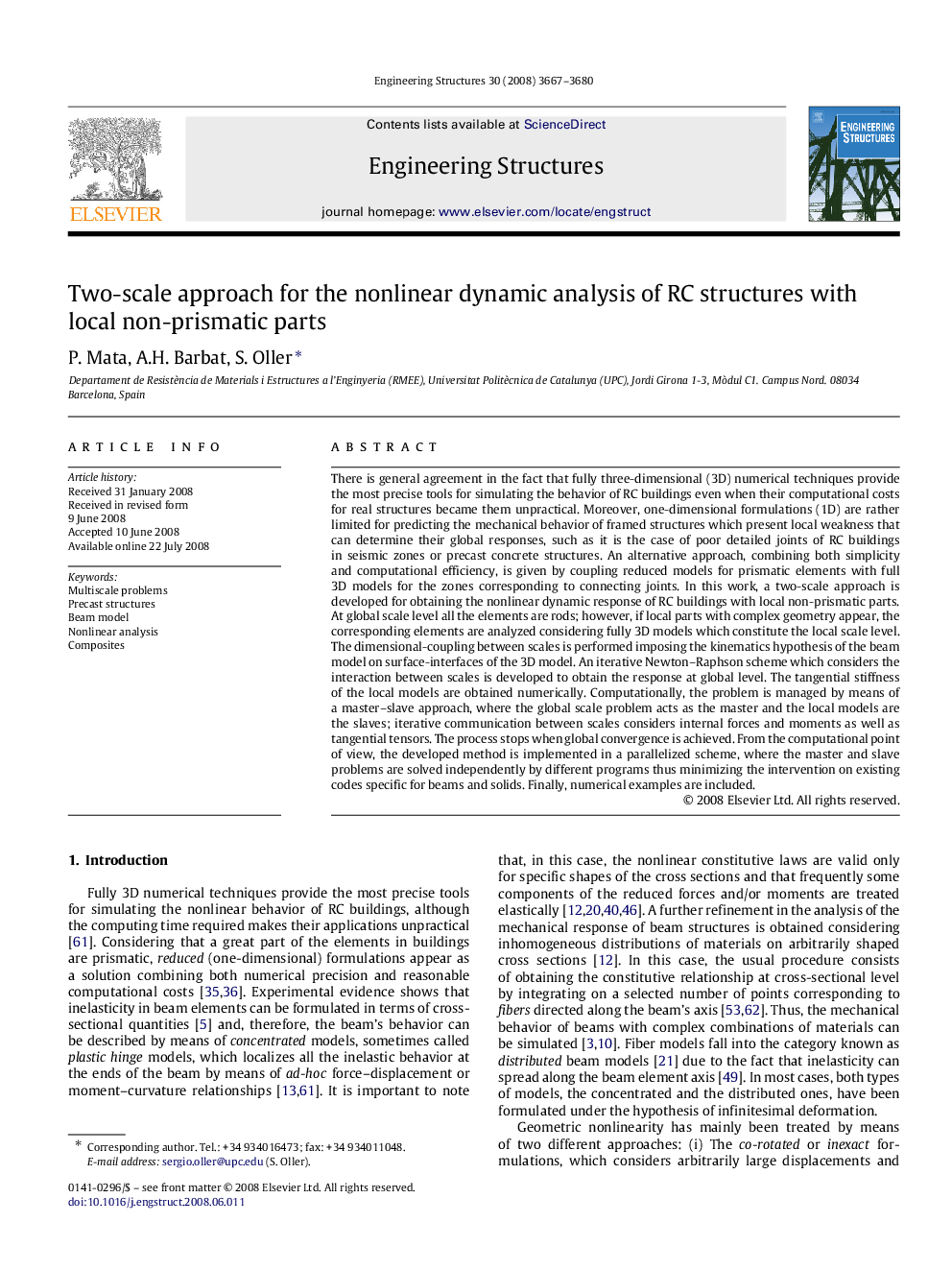| کد مقاله | کد نشریه | سال انتشار | مقاله انگلیسی | نسخه تمام متن |
|---|---|---|---|---|
| 269018 | 504454 | 2008 | 14 صفحه PDF | دانلود رایگان |

There is general agreement in the fact that fully three-dimensional (3D) numerical techniques provide the most precise tools for simulating the behavior of RC buildings even when their computational costs for real structures became them unpractical. Moreover, one-dimensional formulations (1D) are rather limited for predicting the mechanical behavior of framed structures which present local weakness that can determine their global responses, such as it is the case of poor detailed joints of RC buildings in seismic zones or precast concrete structures. An alternative approach, combining both simplicity and computational efficiency, is given by coupling reduced models for prismatic elements with full 3D models for the zones corresponding to connecting joints. In this work, a two-scale approach is developed for obtaining the nonlinear dynamic response of RC buildings with local non-prismatic parts. At global scale level all the elements are rods; however, if local parts with complex geometry appear, the corresponding elements are analyzed considering fully 3D models which constitute the local scale level. The dimensional-coupling between scales is performed imposing the kinematics hypothesis of the beam model on surface-interfaces of the 3D model. An iterative Newton–Raphson scheme which considers the interaction between scales is developed to obtain the response at global level. The tangential stiffness of the local models are obtained numerically. Computationally, the problem is managed by means of a master–slave approach, where the global scale problem acts as the master and the local models are the slaves; iterative communication between scales considers internal forces and moments as well as tangential tensors. The process stops when global convergence is achieved. From the computational point of view, the developed method is implemented in a parallelized scheme, where the master and slave problems are solved independently by different programs thus minimizing the intervention on existing codes specific for beams and solids. Finally, numerical examples are included.
Journal: Engineering Structures - Volume 30, Issue 12, December 2008, Pages 3667–3680